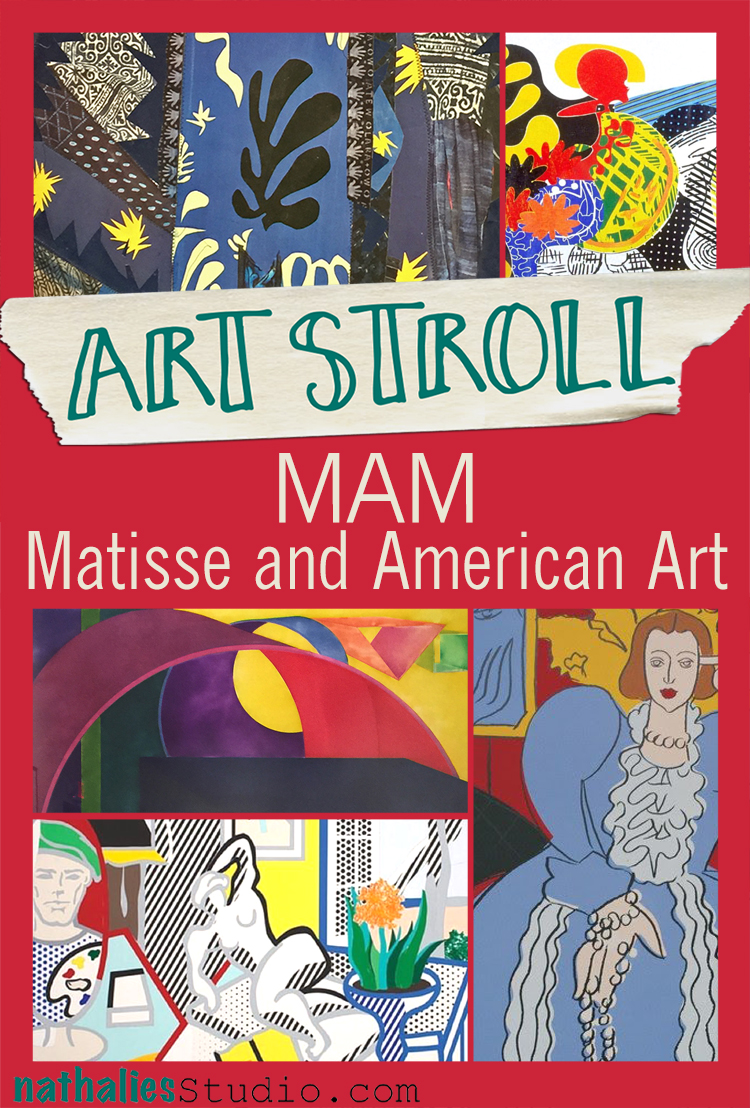
A couple weeks ago my friend Heather pinged me on a Sunday morning and said “Hey, I need to see art today – let’s go to a museum”. I had seen a news report on the exhibition “Matisse and American Art” at the Montclair Art Museum and since I use Matisse as an inspiration for my classes sometimes, I convinced her to go there with me. It was soooo worth it!
The exhibition strives to explore Henri Matisse’s influence on American Artists from 1905 to the present. The list of profilic artists inspired and influenced by his work is immense and the exhibition showed in an interesting way how some artists explored some of his work for a while and some of them took it even further and let it immerse into their own style.
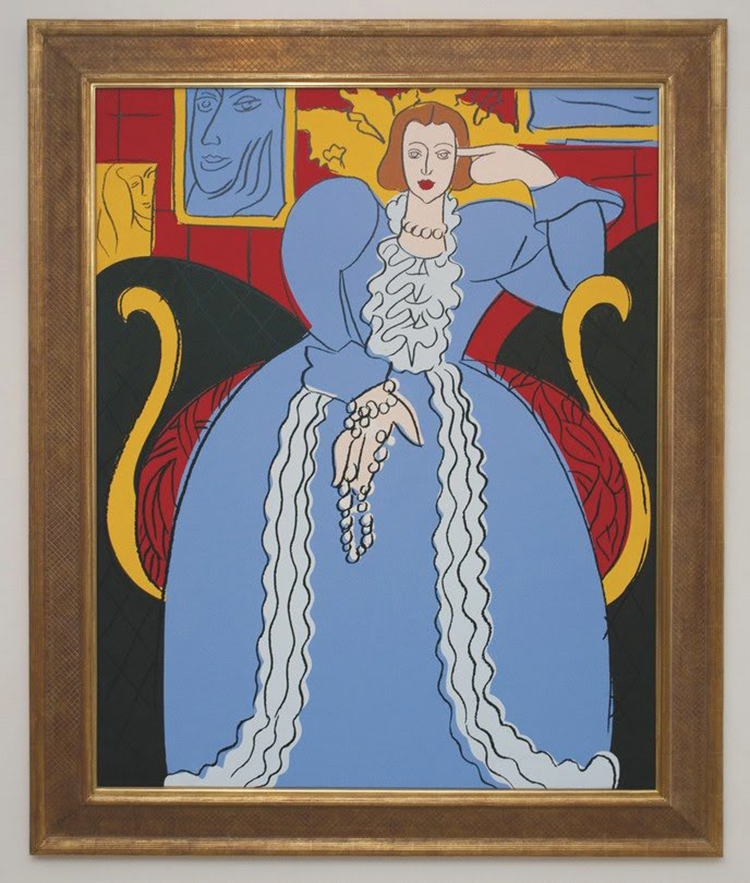
Andy Warhol – Woman in Blue (After Matisse), 1985, synthetic polymer paint and silkscreen inks on canvas.
This painting by Warhol was directly inspired by the Woman in Blue by Matisse from 1937 and even though it is pretty much copied from Matisse down to the colors red, yellow, blue, black, and white, you can see the flatness of the painting so typical for Warhols techniques and the hand holding the necklace says Warhol to me.
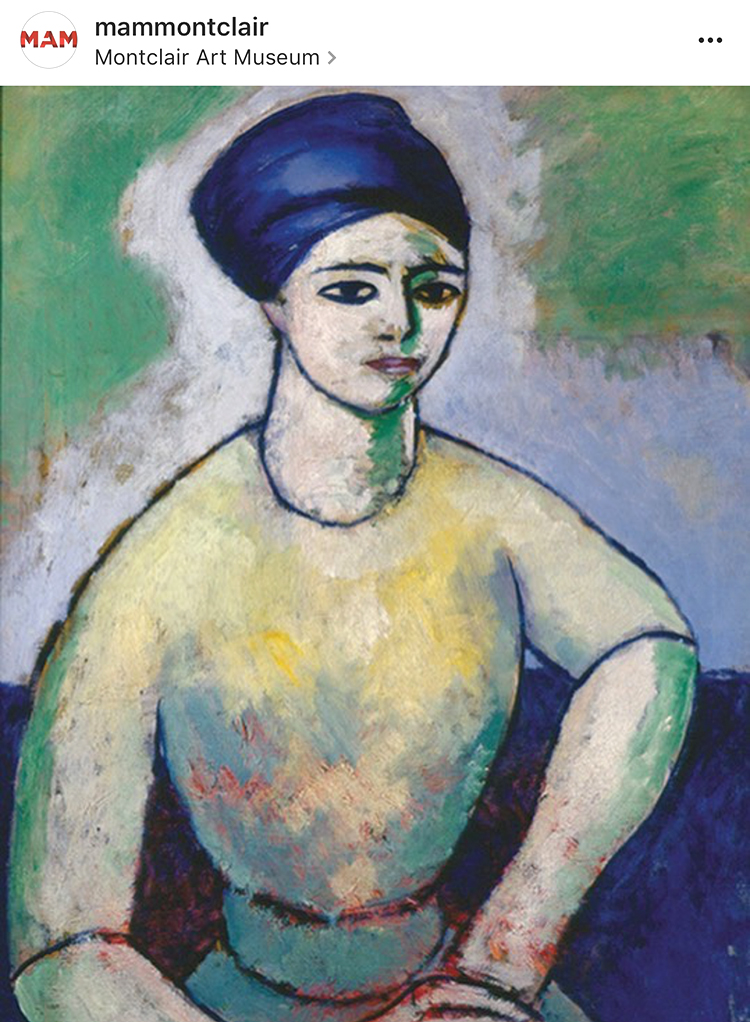
Morton Livingston Schamberg- Studio of a Girl, ca. 1912 – Oil on Canvas
Schamberg traveled extensively in Europe and he must have seen many Matisse paintings during his time there. The paining reminds of Matisse’s painting Painting of Madame Matisse. The Green Line.
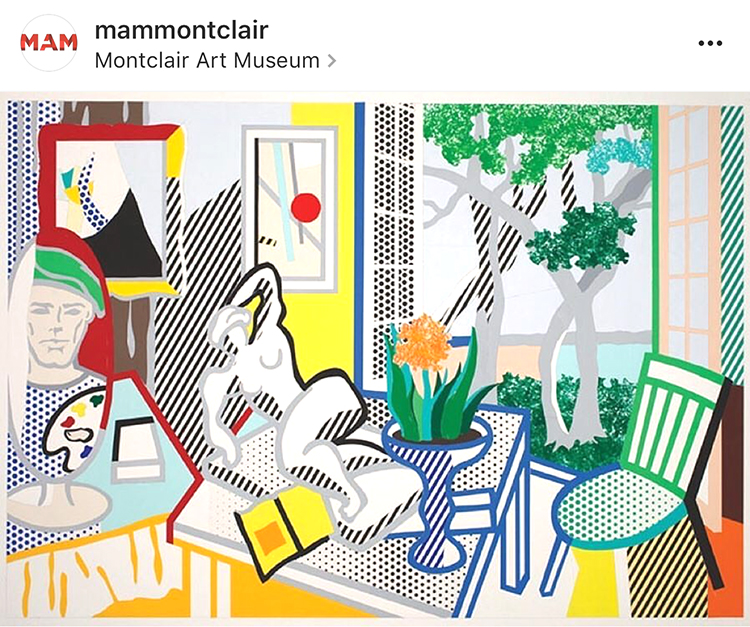
Roy Lichtenstein – Bellagio Hotel Mural: Still Life with Reclining Nude (Study), 1997 cut -and pasted, painted and printed paper on board.
Roy Lichtenstein had a longtime interest in Matisse and Picasso and many references to their artwork can be seen in his work like the simplification of form or direct references of elements in Matisse’s paintings. In this painting parts of his studio, the open window, the patterns.
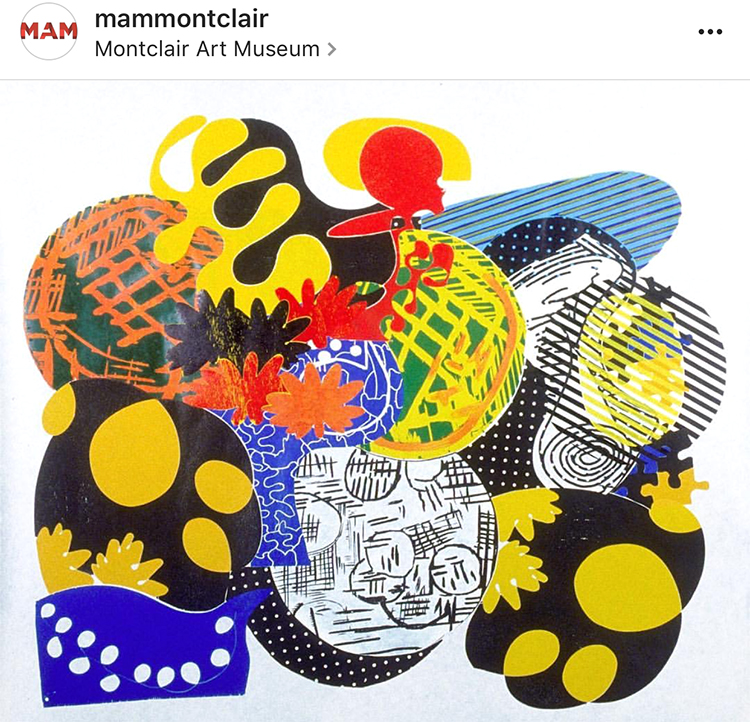
Judy Pfaff – Six of One-Melone, 1987 – Color Woodcut
In her installations, prints and sculpture, Pfaff translates Al Held and Henri Matisse’s theories of color into her own visual language. Pfaff says that Matisse gave her “courage” and has been ” the source of how to teach and how to see”.
On a little side note: Heather and I saw this woodcut different than in the image above. It was hung upside down from what you see here and we remember this so well because Heather actually had a very strong reaction of dislike to the artwork and we stood in front of it discussing why. When we later talked about the exhibition and this piece with our friends we opened the exhibition catalogue to discover that it was displayed as above, and further research had me find it is also displayed differently on the artist website as well as on the MAM instagram account (I used their image above) . Heather like different display in the catalogue also way better than how we actually saw it. So this haunted me for days and finally I wrote MAM and asked if there is a reason for hanging it the other way (artist instruction that it can be hung any way) or if this was an overseen mistake by the technical staff who hung the artwork. And here is their answer:
“Thank you for writing to the Montclair Art Museum. We had been in conversation with the artist about this issue since the exhibition installation, and have just now heard back. The image used in the catalogue and online was provided by and checked by Crown Point Press; when unpacked the artist’s signature placement indicated that it instead by installed as you saw it. Judy Pfaff has now confirmed that the way the artwork is hung is correct, and you’ll find that all publicity and use of the image going forward will be corrected.”
And so apparently the way we saw it as below – is the right way (btw- it is now changed on the Artist website as well) :)
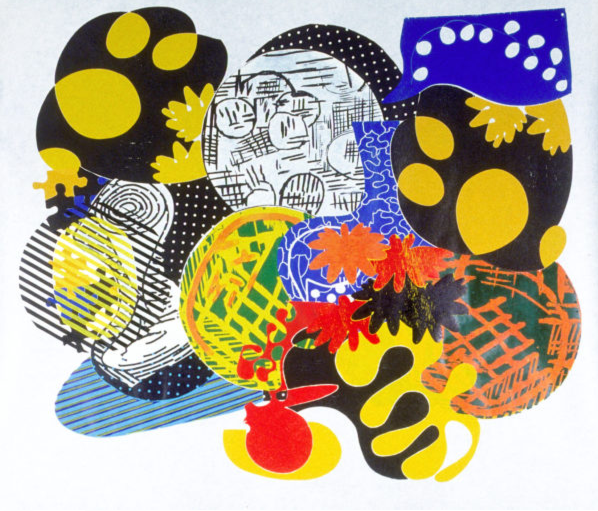
Now which way does speak more to you? I actually liked it the “wrong” way in the catalogue and instagram page better than the way it is hung and apparently now supposed to be hung. the shapes feel more organically and right – and the forms are more balanced for me in the top version. But hey ….who argues with the artist. But I thought this was interesting.
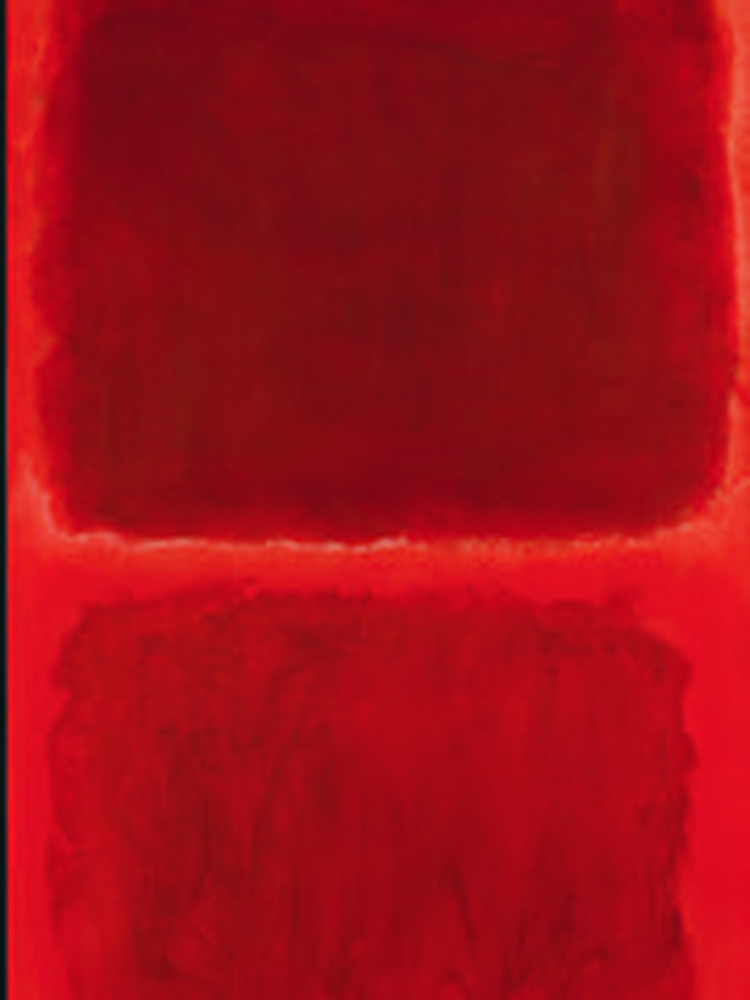
Mark Rothko, No. 44 (Two Darks in Red), 1955 – Oil on Canvas
Mark Rothko called Matisse “the greatest revolutionary in modern art”. Rothko studied Matisse’s The Red Studio (1911) after MoMA had acquired it in 1949. He went to the museum and every day for several months just to stand in front of the picture. While viewing the painting he said ” You became that color, you became totally saturated with it as if it were music” .
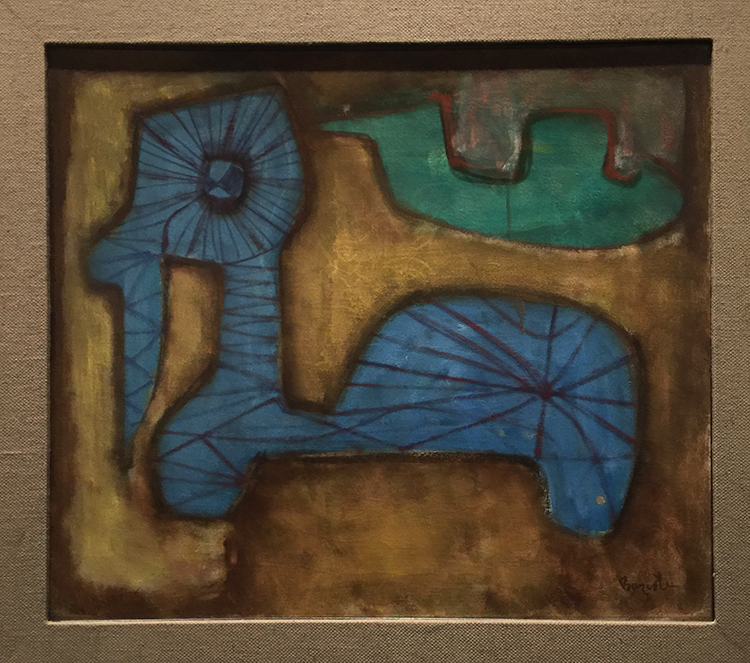
William Baziotes, Toy Animal – 1947 – Oil on Canvas.
Baziotes was so inspired by his visit to the Matisse retrospective at MoMA in 1931 that he resolved to move to New York to study art. Baziotes’ basic shapes and luminous color recall many of the plant and human forms that populate Matisse’s work.
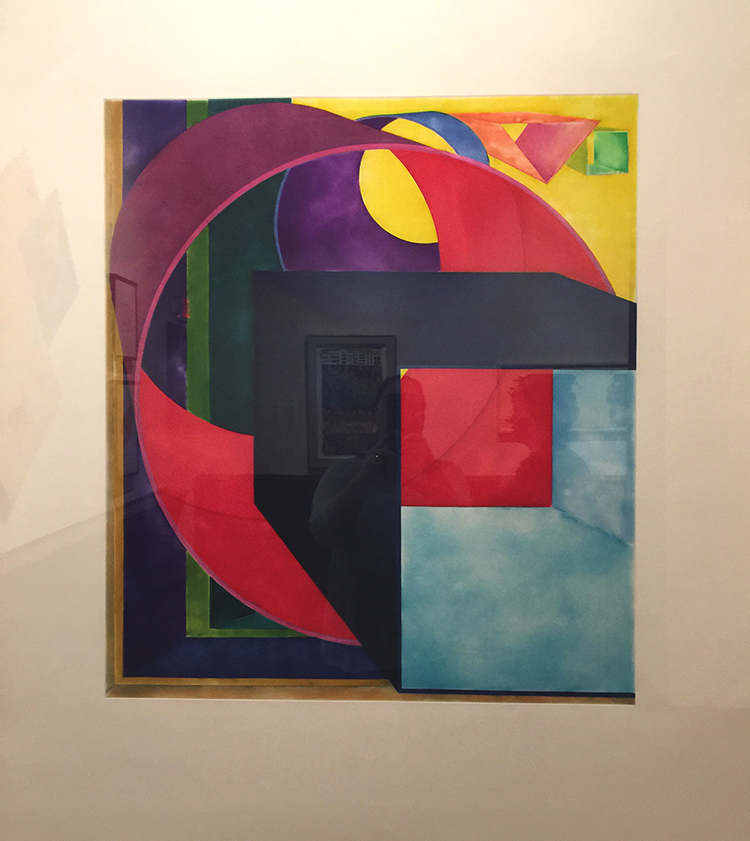
Al Held – The Space between the Two – 1992 – print
Al Held studied and used Matisse’s ideas about color, form, structure and scale.
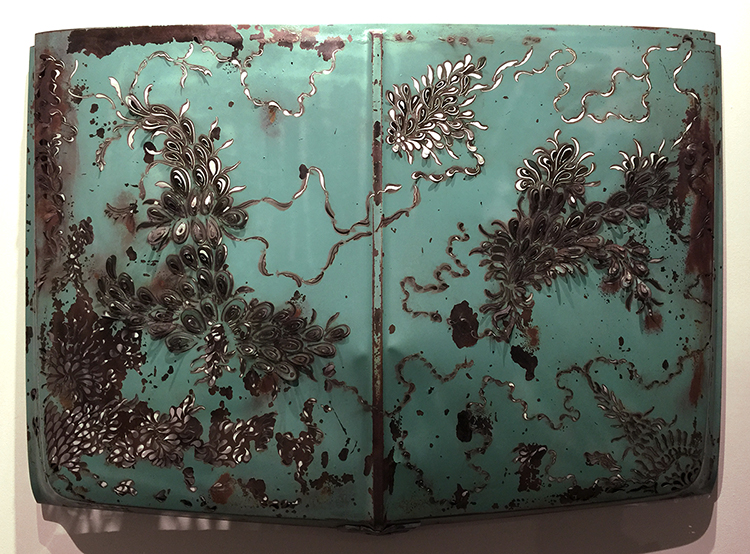
Denice Bizot, Urban Flora, 2014 – 1960s Chevrolet truck hood cut with plasma torch
Bizot’s organic shapes are reminscent of Matisse’s paper collage cut- outs of the late 1940s and early 1950s.
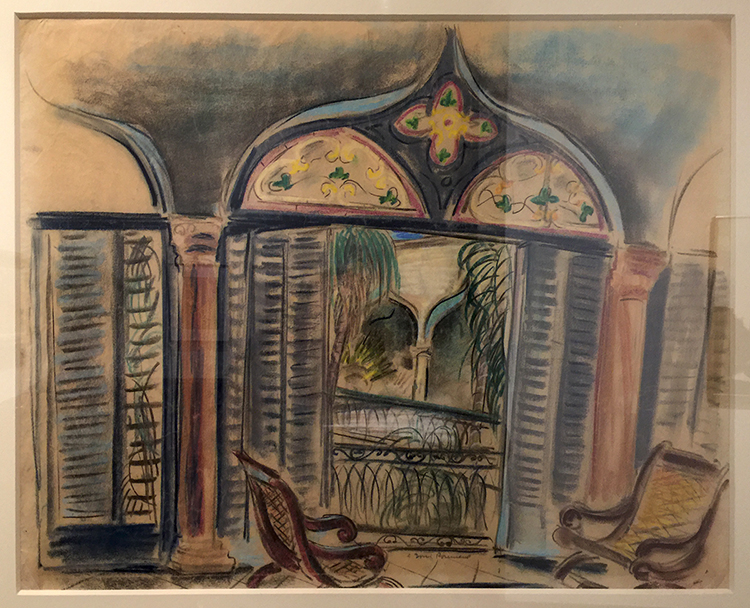
Doris rosenthal, Gran Terrazo, ca. 1920-1922 -Pastel on Paper
This painting shows Rosenthal embracing Matisse’s vibrant color and idyllic subject matter. Matisse often used windows as a vehicle for exploration into color, light and interior versus exterior space.
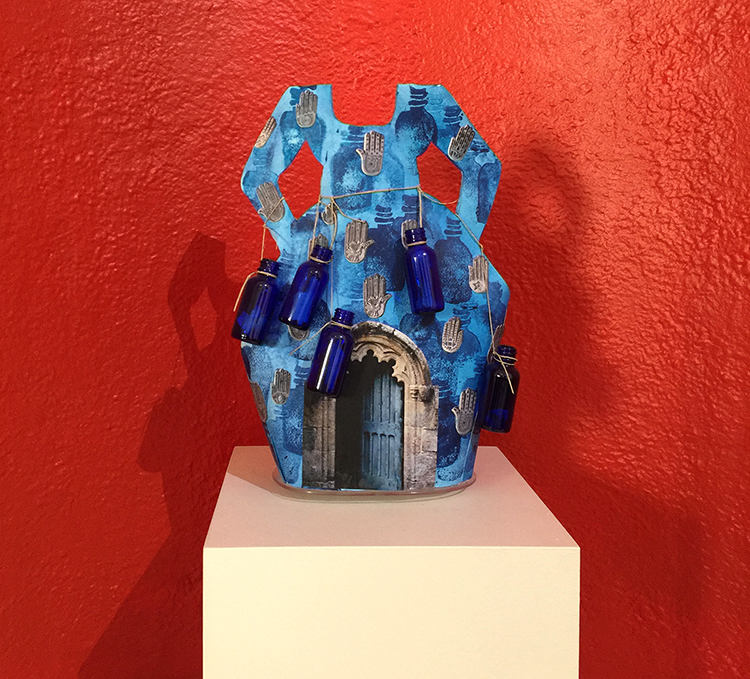
Janet Taylor Pickett, Indigo Bottle Dress – Charms and Inspirations – Acrylic, digital photograph, glass bottles with written messages and twine on shaped Arches Paper.
Picket’s creative conversation with Matisse spans her entire career.
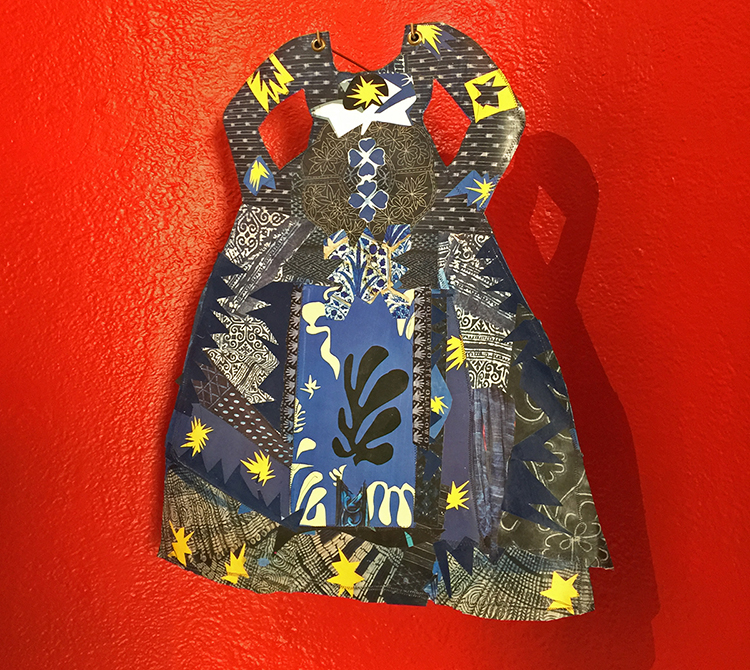
Janet Taylor Picket, Dressing in Context 2, 2015 – Collage of various papers, thread and acrylic on Arches paper with grommets.

Janet Taylor Pickett, Me & Matisse, 2003 -04 – Handmade book
In this book, Taylor Pickett’s aspirations to become an artist are combined with her travels abroad to France and her longing for home, which she characterizes as “a metaphor, an idea for finding my voice as an artist”.
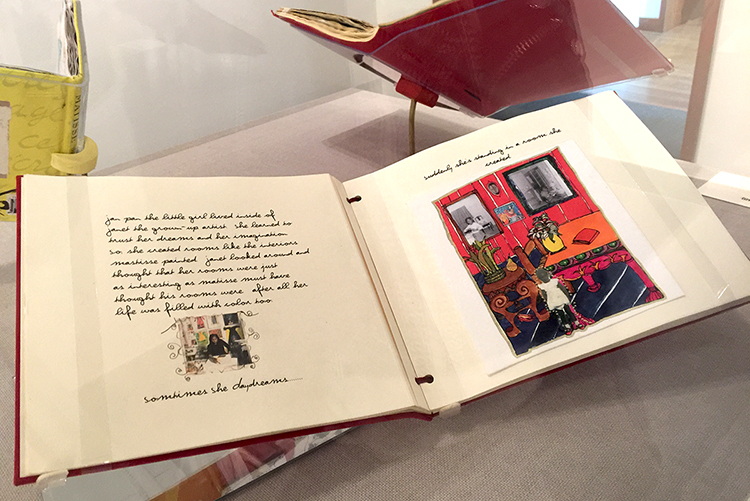
As you might imagine the books made me swoon and I want to do something like this !
It was an amazing and inspiring exhibition. I loved seeing all the different ways how other artists were inspired- and still are inspired by Matisse . I came home from the exhibition totally recharged and explored different – Matisse-inspired- things in my studio for several days. It made me yet again so aware of our differences and our connections – magical! I was also surprised what a wonderful Museum this is and what a huge amount of artwork from even more than the shown well known artists (couldn’t show all) like Stuart Davis, Milton Avery, Richard Diebenkorn, Helen Frankenthaler, Hans Hoffman, Robert Motherwell and many more the museum was able to show for this exhibition. I for sure have this museum on my list and if you are in the New Jersey area- check out this exhibition which is still on view until June 18, 2017.
I hope you enjoyed this little Art Stroll and found some inspiration in it!

Comments (6)
Sue Clarke
| #
Indigo bottle dress is super cool and I would love to have it in my bedroom.
As to Judy Pfaff’s – Six of One-Melone I do not like it hung the “correct” way…seems off to me.
Funny how that works.
I always enjoy strolling with you Nat.
Reply
nathalie-kalbach
| #
I loved that dress too, Sue …I actually also want the red little alcove in my bedroom :) I agree with you on Six of One Melone! Have a gorgeous weekend!
Reply
Jean Goza
| #
Always enjoy your Art Strolls. Invariably I find new artists that inspire me. And Matisse has always been a favorite of mine so I enjoyed seeing other artist’s inspiration from his work. Regarding your question on Judy Pfaff’s Six of One Melone piece, I definitely like the “upside down” version better. The balance of the “correct” version feels off to me. It feels as if the larger components of the piece want to “collapse” into the small red and yellow area at the bottom. As you said, you can’t argue with the artist. It’s always fascinating to me the different emotional responses people will have to a piece of art.
Reply
nathalie-kalbach
| #
thank you Jean! Yes- I agree on the composition and how it feels better the “wrong” way. I am also fascinated that people have different emotional responses to art – sometimes certain artists use symbols or subject matters that resonate differently depending if you have the same cultural background as the artist which I find very interesting to discover with friends when going into museums.
Reply
Bea
| #
Really interesting…thanks…
Reply
nathalie-kalbach
| #
thanks for visiting Bea!
Reply